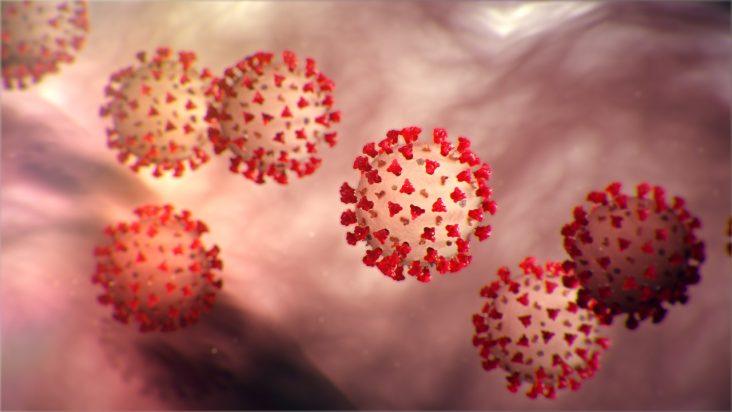No coronavirus cases, but Arkansas health officials preparing
by February 10, 2020 9:11 pm 6,206 views

Arkansas has not seen any cases of the novel coronavirus that has killed 900 people worldwide, but it has planned for such pandemics, and anyone who has been to China should work with state health authorities, Secretary of Health Dr. Nathaniel Smith told legislators on Monday (Feb. 10).
Speaking to the House and Senate Public Health, Welfare and Labor Committees, Smith said the state plans for pandemics, with the expected “doomsday scenario” being an influenza epidemic as deadly as the 1918-19 Spanish flu that the Centers for Disease Control and Prevention says killed 675,000 Americans.
Plans are in place with the state’s hospitals. Also, test kits have gone to all state labs including Arkansas’, and the state is going through the process of validating that it can use them properly. That process is expected to take one or two weeks.
“I’m not going to say that any level of planning is necessarily going to cover all the bases, but we have done quite a bit of preparation for a threat like this,” he said.
Smith said health officials need to know if Arkansans have traveled to China, where the disease originated, so they can be monitored during its 14-day incubation period.
“We don’t have it here right now, but we want to keep it out, and if you’ve traveled to an area or been exposed to someone with an infection, you need to work with us and do what we tell you to do,” he said.
The disease has spread rapidly, with the first reported case occurring Dec. 1, 2019. On Jan. 10, the disease’s genome was published online. Arkansas had one potential case that it sent to the CDC. Smith said it was received on Thursday, Jan. 30, and the negative result was known on Sunday, Feb. 2.
“The speed of technology has been unprecedented in the response to this outbreak,” he said.
The World Health Organization declared the epidemic a public health emergency Jan. 30. A week ago there were 20,000 cases worldwide, and now there are 40,000, while deaths have risen from more than 500 to more than 900 over that time. Twelve cases have been reported in the United States. The disease has a 2-3% mortality rate.
“This outbreak, this epidemic has been doubling in size about every week,” he said.
The virus was first transmitted to humans in Wuhan, China, probably from bats. Most of the early patients had contact with a seafood market in Wuhan where a variety of wild animals are bought and slaughtered on site.
Once it passed from animals to humans, it was transmitted person to person. Smith said Wuhan has 11 million people and is a major transportation hub in China.
The novel coronavirus seems to be spreading like the flu or cold does, through droplets within about six feet, he said. The disease can result in fever, dry cough, shortness of breath, fatigue and gastrointestinal issues. The incubation period is 2-14 days, but most people get sick in 3-6 days.
About 20-30% of those infected will become severely ill and require intensive health care measures, but no antiviral treatments have proven effective against the disease, he said. Clinical trials are ongoing. The National Institutes of Health is working with drug manufacturer Moderna to develop a vaccine, with human testing possible as early as April, but it could take a year or more for something to be shown to be effective. He said the time to develop a vaccine had shortened to a year or a year and a half, but, “In no case have we ever been able to develop a vaccine for a novel pathogen in time to help with that first wave.”
Viruses can be seasonal and lessen in warmer weather, but it’s not known if that applies to coronavirus.
Smith said it’s estimated that an infected person will spread it to between 1.5 and 3.5 individuals. For the epidemic to subside, that number must be less than one.
He said he does not remember the U.S. ever taking such aggressive travel restrictions as it has with this epidemic.
“Right now, our main line of defense is to try and keep people from spreading the virus to other people,” he said.
Asked by Sen. Trent Garner, R-El Dorado, if China could be purposely underreporting its number of cases, Smith said China has only a certain amount of testing capacity, and probably only the most severe cases are being tested. The mathematical models show the number of cases should be higher than what has been reported.
He expressed concern about the disease being transmitted from China to Africa, where countries would not have the means to take countermeasures.
Smith said the novel coronavirus is part of a large family of coronaviruses, so named because they appear to have spikes that look like the sun’s corona. The two other serious versions are the Severe Acute Respiratory Syndrome virus, or SARS, and Middle East Respiratory Syndrome, which continues to have small outbreaks and is related to exposure to camels.
SARS killed about 800 people when it became an epidemic in 2003. The risk of dying for those infected was 10%. Novel coronavirus has a 2-3% mortality rate, but it has spread faster and killed more people since Dec. 1 than SARS killed in 18 months. Seasonal flu has a .1 percent mortality rate. Other coronaviruses can cause the common cold.
He noted that very few children have become ill with the virus. It’s unknown if children are less likely to be infected or less likely to become symptomatic.
